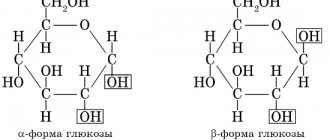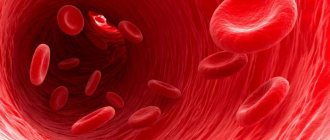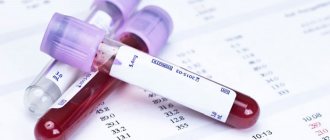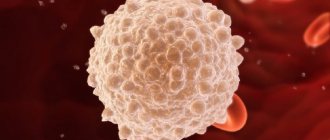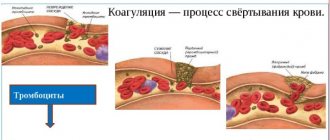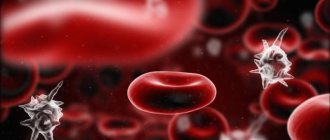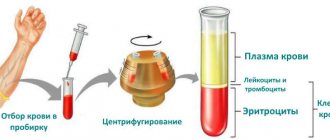Sugar, or glucose, is the main nutrient for the human body. An insufficient amount of glucose in the blood leads to the fact that the body begins to take energy from fat reserves. This produces ketones. They are very toxic and lead to serious disorders in the body and intoxication.
The opposite condition – high blood sugar – also negatively affects the child’s health and causes a well-known dangerous disease – diabetes mellitus. Constantly exceeding the permissible glucose level disrupts the functioning of all organs and systems. It is important for parents to know what the normal level of glucose in the child’s blood is and what to do when sugar rises.
Normal sugar levels in a child
Table of blood sugar norms for children of different ages
| Age | Normal blood sugar, mmol/l |
| Newborns | 1,7–4,2 |
| 1–12 months | 2,5–4,7 |
| 5 years | 3,2–5,0 |
| 6 years | 3,3–5,1 |
| 7 years | 3,3–5,5 |
| 10 years | 3,3–5,6 |
| 10–18 years | 3,5–5,5 |
Exceeding normal blood sugar levels indicates hyperglycemia. This condition threatens the development of diabetes mellitus.
A decrease in indicators - hypoglycemia - is a dangerous condition accompanied by disruption of brain function, pathologies of internal organs, and delayed mental and physical development.
What can influence the results of the analysis?
Drugs may affect test results
The accuracy of the analysis is negatively affected by:
- Physical activity immediately before donating blood;
- Emotional stress, severe fear of the procedure;
- Stressful conditions;
- Taking certain medications (it is worth discussing changes in your medication regimen with your doctor).
Elevated glucose levels can sometimes be detected in healthy children for a number of physiological reasons, but the values never exceed 7.0 or 11.0 mmol/l on an empty stomach and after meals, respectively. Any, even the most minor, deviation from the norm in this analysis is a reason to consult your doctor as soon as possible.
Analyzes
A number of diagnostic tests are performed to determine blood sugar levels. The simplest is a fasting finger prick blood test. If the results are doubtful, additional studies are prescribed: analysis for glycated hemoglobin, assessment of glucose tolerance, and others.
Indications
Indications for a blood test are changes in the child’s behavior and well-being. Warning symptoms include:
- constant thirst, feeling of dry mouth;
- sudden weight loss with a good appetite;
- fatigue, drowsiness, apathy;
- increase in daily urine volume;
- susceptibility to viral and infectious diseases.
Additionally, the analysis is prescribed for children who are overweight or have a family history of diabetes.
Glucose levels are assessed during a preventive examination once a year.
Preparation
To obtain reliable research results, properly prepare your child for the analysis by following the following recommendations:
- At least 8 hours must pass from the last meal to the blood draw.
- On the day of the test, you should not drink water, brush your teeth with toothpaste, or rinse your mouth.
- Stop taking all medications 24 hours in advance. If medications are vital, tell your doctor and laboratory technician about the medications you are taking.
- Limit your child's excessive physical activity and protect him from stress and emotional distress.
From the finger
To determine glucose levels, a finger prick blood test is prescribed, which is performed in a laboratory setting. A glucometer will also help determine the indicator at home.
The procedure for conducting a rapid test:
- Wash your hands thoroughly and dry them with a towel.
- Insert the test strip into the device.
- Prick your finger with a lancet.
- Apply a drop of blood to the test strip.
- Apply a cotton swab soaked in medical alcohol to the puncture site.
The result is deciphered independently, taking into account the table of sugar norms and the instructions for the device.
Other studies
If, according to the test results, blood sugar is elevated, an additional test is prescribed - a glucose tolerance test. The procedure for carrying it out:
- A control blood sample is taken on an empty stomach.
- The child is given a concentrated glucose solution - from 50 to 75 ml, depending on age.
- After 30, 60 and 90 minutes, blood is taken again for analysis. To obtain reliable data, you should not drink water or eat food until the end of the study.
- If after an hour the blood sugar level is above 7.8 mmol/l, a diagnosis of “prediabetes” is made; if more than 11 mmol/l is “diabetes mellitus”.
Sometimes tests give false positive results, especially if preparation recommendations are not followed. The following factors influence the indicators:
- conducting the study not on an empty stomach;
- eating sweets, fruits, high-carbohydrate foods the day before;
- excessive physical activity;
- acute respiratory disease;
- taking antibiotics, corticosteroids and certain other groups of drugs.
Does my child need to prepare for a blood sugar test?
You need to properly prepare for a blood sugar test. To get a reliable result, you need:
READ ALSO: How do they take blood tests from children?
- donate blood on an empty stomach (the last meal should be 10-12 hours before the test);
- Do not give breastfeeding to infants before the procedure for at least 2-3 hours; a nursing mother should also remove all sweets from her diet the day before;
- the night before, eliminate sugary drinks, juices and foods rich in simple carbohydrates;
- do not chew chewing gum or brush your teeth with toothpaste in the morning, since they contain sugar;
- You can take medications only with the permission of a doctor, when you are sure that they will not distort the diagnostic results;
- avoid stress and excessive physical tension; prepare an older child psychologically for the procedure;
- You cannot take the test while you are ill.
Once diabetes is diagnosed, glucose levels should be monitored regularly. For this purpose, a special device is used - a glucometer. Usually, you use it to check your sugar 1-2 times a month on your own at home. For children, this method will be even preferable because it is less painful.
Causes of hyperglycemia
Factors that contribute to increased blood sugar levels:
- viral infections that negatively affect the pancreas (chicken pox, measles, mumps, hepatitis);
- excess weight;
- low physical activity;
- poor nutrition, predominance of foods rich in carbohydrates in the diet;
- diseases of the thyroid gland or adrenal glands, hormone instability;
- hereditary predisposition to diabetes.
Hypoglycemia is provoked by the following factors:
- dehydration of the body;
- starvation;
- diseases of the gastrointestinal tract;
- blood diseases (lymphoma or leukemia);
- poisoning with drugs or chemical compounds;
- neoplasms that stimulate excessive insulin production.
Recommendations for adjusting sugar levels
Hypoglycemia in most cases does not require drug treatment. To restore the balance of insulin in case of excess, you need to give the child a few sweets (chocolate, a piece of cake) or administer glucose intravenously. Soon the baby’s health will return to normal.
To restore normal sugar concentrations in children suffering from hyperglycemia and diabetes mellitus, it is necessary to engage in comprehensive treatment:
- monitor the baby’s hygiene, check the condition of the skin;
- engage in sports with your child if his health condition allows;
- follow a diet: exclude all sweet foods and drinks from the baby’s diet;
- For diabetes, drug therapy is required: injections of hormones in prescribed dosages.
Symptoms
Signs of hyperglycemia in a child:
- lethargy, apathy, decreased performance and activity;
- increased drowsiness, fatigue;
- constant thirst, dry mouth, excessive fluid intake;
- sudden weight loss due to increased appetite;
- dry skin, itching in the anus and genital area;
- poor wound healing.
Hypoglycemia is no less dangerous, so it is important to know the symptoms of low sugar levels:
- increased excitability;
- headache, dizziness;
- strong craving for sweets;
- increased sweating;
- sleep disturbance.
Reduced values
Excitement is a symptom of hypoglycemia
Sugar levels sometimes drop significantly. The phenomenon is rare, but you need to be aware of it. Usually occurs in overly active children.
Severely reduced indicators can be determined by the child’s behavior:
- aggression,
- excitement,
- whims,
- dizziness,
- heavy sweating
- desire to eat sweet foods,
- pallor,
- convulsions rarely occur
- loss of consciousness.
Whims appear for certain reasons
A child has low blood sugar: reasons:
- strong activity, energy does not have time to be replenished,
- disrupted metabolic processes,
- the child has not eaten for a long time,
- stress,
- diseases of the nervous system,
- tumor formations.
Prevention of diabetes mellitus in children
To maintain normal blood sugar levels and prevent diabetes in children, follow these simple recommendations.
- Monitor your child's nutrition. It should be healthy and balanced, with a predominance of proteins, complex carbohydrates, and plant products in the diet. If you are prone to diabetes, exclude sweets, fruits, fast food, snacks, baked goods, confectionery, and processed foods.
- Increase your child's physical activity: do morning exercises together, walk in the fresh air, send him to a sports section. This will help the body cope with excess glucose.
- Contact your pediatrician or endocrinologist if you notice the first signs of hyper- or hypoglycemia. If diabetes is confirmed, regularly monitor blood glucose levels with a special device, monitor the child’s nutrition and hygiene.
Blood sugar levels in children depend on age. Deviation of indicators up or down indicates pathological processes occurring in the body. Such changes are dangerous to health, so consultation with a doctor and correction of the condition is required.
Rate this article 5 5 (1 ratings)
What are the dangers of deviations from normal values?
Comas pose a major health risk
The most dangerous complications of high and low blood glucose levels are hypo- and hyperglycemic coma.
Hyperglycemic coma is also called diabetic coma because it most often develops in patients with diabetes mellitus. It comes on gradually, with a general deterioration in health, weakness, and headache. Symptoms similar to poisoning may appear (nausea, bloating, sometimes even vomiting); after about a day, the sick person falls into a precomatose state: consciousness is depressed, speech becomes slow. Without help, the patient then falls into an unconscious state called a coma.
Hypoglycemic coma is characterized by rapid development: the patient becomes covered in cold sweat, experiences attacks of rapid heartbeat, dizziness and fear. Then comes loss of consciousness, often accompanied by convulsions.
The described manifestations are typical for significantly deviating indicators, however, even with a slight increase in blood glucose levels that lasts for several months, vascular damage begins to develop, primarily affecting the kidneys and the lens of the eye. Without proper treatment, blood glucose levels can reach life-threatening levels very quickly.
What to do if a disease is detected?
Children with elevated glycemic levels are prescribed appropriate therapy, which includes the following measures:
- taking medications;
- following a diet with limited carbohydrates;
- performing physical activity;
- timely implementation of hygiene procedures in order to reduce itching and prevent purulent formations;
- providing psychological assistance.
It is important to understand that diabetes is not a death sentence. Parents simply need to pay more attention to the child, monitor diet and therapy, and help him adapt to new living conditions.
Could the results be unreliable?
No medical analysis is immune from error. Therefore, specialists conduct at least a couple of different examinations at different times before making a verdict on the child’s health.
However, there is no reason to doubt the results if the baby exhibits symptoms such as:
- Intense thirst;
- Constant feeling of hunger;
- Specific smell of urine;
- Physiological craving for sweets;
- Fast fatiguability;
- Drowsiness, especially in the daytime and morning;
- Changes in body weight – both loss and gain of kilograms;
- Heavy sweating.
These signs indirectly indicate that the blood glucose level is abnormal . However, if there are serious doubts about the reliability of the survey. It can always be confirmed or refuted by undergoing tests in another medical institution or using a glucometer on your own.
Notes
Notes and explanations to the article “Glucose (sugar) in the urine (glucosuria).” To return to a term in the text, click the corresponding number.
When writing an article about sugar (glucose) in urine and glycosuria, materials from the portals NCBI.NLM.NIH.gov, MerckManuals.com, Diabetes.co.uk, NDT.OxfordJournals.org, WebMD.com, RostovNephro.ru were used as sources. , VolgMed.ru, 1SPbGMU.ru, KrasGMU.ru, BiosensorAN.ru, Wikipedia, as well as the following printed publications:
- Kost E. A. (editor) Handbook of Clinical Laboratory Techniques. Publishing house "Medicine", 1975, Moscow,
- Ignatova M., Veltishchev Y. “Children’s nephrology.” Publishing house "Medicine", 1989, Moscow,
- Morozova V. T., Mironova I. I., Martishevskaya R. L. “Urine examination.” Publishing house "Publishing house of the Russian Medical Academy of Postgraduate Education", 1996, Moscow,
- Natochin Yu. V., Mukhin N. “Introduction to nephrology.” Publishing house "GEOTAR-Media", 2007, Moscow,
- Michael A. Weiner, Mitchell S. Cairo "Secrets of pediatric oncology and hematology." Publishing house "BINOM. Knowledge Laboratory", 2008, Moscow,
- S. Mitchell Lewis, Barbara J. Bain, Imelda Bates "Practical and laboratory hematology." Publishing house "GEOTAR-Media", 2009, Moscow,
- Poddubnaya I. “Oncology. Handbook for a Practitioner." Publishing house "MEDpress-inform", 2009, Moscow.
- David Gardner, Dolores Shobeck "Basic and clinical endocrinology." Publishing house "BINOM. Knowledge Laboratory", 2010, Moscow,
- Ronin V., Starobinets G., Utevsky N. “Guide to practical classes on methods of clinical laboratory research.” Publishing house "Alliance", 2011, Moscow,
- Kamyshnikov V., Volotovskaya O., Khodyukova A., Dalnova T., Vasiliu-Svetlitskaya S., Zubovskaya E., Alekhnovich L. “Methods of clinical laboratory research.” Publishing house "MEDpress-inform", 2019, Moscow.
| 14–18 years old | 3.6–6 mmol/l |
Rules for helping children
A child who is faced with medical procedures and changes in his own established way of life, in connection with the results of these same procedures, should be given help.
You need to help your child in two ways:
- Adjust blood glucose levels with nutrition;
- Psychologically support a child experiencing changes and try to prevent the development of stress.
Proper nutrition
The correct diet for a baby consists of the following recommendations:
- Limit all foods high in animal fats and easily digestible carbohydrates;
- Increase the percentage of vegetable fats in the diet;
- Exclude grapes and bananas from fruits;
- Divide meals into 5-6 times a day.
These are general rules for any violations of glucose standards; more precise instructions for adjusting the diet are given by the endocrinologist observing the child.
Read more about what you should not eat if you have high blood sugar here.
Psychological help
- It’s a good idea to make an appointment with a child psychologist. However, this is not always possible due to various circumstances. The most important thing to remember is that it is better to do once than to say a hundred times, especially when it comes to children.
- It is important for the whole family to change their diet and eat the same things as the baby. It is impossible to convince a child that he is normal and full-fledged if there is cabbage with rice on his plate, and the rest have cutlets with pasta. Changes should affect the whole family in all areas.
You should not immediately and abruptly give up sweets or fast food . It’s just that harmless sweets, for example, for diabetics, should be placed in a vase on the table. As for visiting fast food, it is worth looking for and remembering the most carbohydrate-free products in their assortment, and, of course, try not to visit such places.
Along with these main directions of helping your baby, you need to follow a number of simple rules:
- Careful hygiene in case of bruises, scratches, etc., since if glucose levels are abnormal, any damage to the skin can fester;
- Monitoring the level of physical activity, strictly in accordance with the doctor’s instructions - no more and no less;
- Replacing toothpaste if the sugar level is exceeded. for tooth powder;
- Compliance with all recommendations of the endocrinologist;
- Constant monitoring of the child’s condition at home using a glucometer.
Renal threshold and glucose
The primary function of the kidneys is to regulate the body's chemical homeostasis through urine formation. The kidneys cleanse the body of toxins and foreign agents. The kidney structures filter the blood, removing unnecessary substances, absorbing (absorbing, absorbing) the necessary elements back into the bloodstream. At the same time, the ability of the renal tubules to return glucose into the bloodstream is limited.
When the critical level of blood sugar is exceeded (8.9-10.0 mmol/liter / 160-180 milligrams/deciliter), the renal tubules can no longer cope with the increased load, as a result of which excess glucose is excreted (excreted) in the urine. This mark is called the “renal threshold” and is individual for each person, but, as a rule, approximately fits into the above range of blood glucose concentrations.
In pregnant women, the renal threshold usually decreases in the second half of pregnancy (usually the third trimester), and a urine test demonstrates the presence of sugar.
The renal threshold for glucose is:
- in an adult with normally functioning kidneys 8.9 – 10 mmol/l (decreases with age),
- in a child – 10.45 – 12.65 mmol/l.
Some chronic kidney diseases raise the glucose threshold. With nephropathy accompanied by impaired glucose resorption (renal diabetes), the appearance of sugar in the urine is possible with normal or low blood sugar levels.
Why might the indicator be higher or lower than normal?
The value of glucose concentration depends on various factors, including diet, hormone levels and the functioning of the digestive system.
The main reasons affecting the indicator:
- Immaturity of the pancreas due to physiological characteristics. This condition often occurs in newborns. The organ continues its maturation during the first years of life.
- Active phases distinguished during the development of a child. Children aged 6-8 or 10-12 years experience powerful hormonal surges. In this state, body structures increase in size, affecting all indicators, including sugar levels. The increased work of the pancreas under such conditions becomes a source of production of additional amounts of insulin.
Increased glucose is most often associated with the following factors:
- incorrect analysis or incorrect preparation for the test;
- stress or nervous tension that the child experienced on the eve of the study;
- pathologies of the thyroid gland, pituitary gland or adrenal glands;
- decreased insulin production due to pancreatic tumors;
- obesity;
- long-term use of NSAIDs or glucocorticoids;
- unbalanced diet;
- infectious diseases.
Reasons for the decline:
- excessive physical stress without replenishing energy;
- prolonged fasting;
- disturbance in metabolic processes;
- lesions of the nervous system, in which tumors and injuries are observed;
- constant exposure to stressful situations;
- sarcoidosis;
- diseases of the digestive system;
- arsenic or chloroform poisoning.
A fall or increase in glycemia should be a reason for additional examination to determine the source of the pathological process.
Video from the famous pediatrician Komarovsky about diabetes in children:
https://youtu.be/-VMyom4IEtI
Preparatory activities
To get the maximum result from the analysis, you must adhere to the following series of recommendations before submitting it:
- 8 hours before diagnosis, do not eat food and only drink water.
- Oral hygiene should not be performed on the morning of the diagnosis.
- If you are taking certain medications, you will need to stop taking them the night before the test. If this is impossible, the child’s parents should notify the doctor. The test is carried out in the morning on an empty stomach, and blood is taken from a finger.
Functions of blood glucose
The level of glucose in the blood is the most important indicator of health.
The concentration of this substance is regulated by hormones produced in the pancreas:
- insulin – limits its amount;
- glucagon – helps to increase it.
Main functions:
- takes part in exchange processes;
- helps maintain the body's performance;
- is a nutrient for brain cells;
- helps improve memory;
- supports heart function;
- Helps quickly eliminate the feeling of hunger;
- removes stress;
- increases the speed of muscle tissue recovery;
- assists the liver in the process of neutralizing toxins.
Excess or low levels of this nutrient are considered a sign of a pathological condition in the child and require medical intervention.
Mechanism of glucose reduction
Lower glucose levels compared to adults have natural causes.
Firstly, the child has a very intensive metabolism and growth. And for metabolic “construction” processes, glucose is needed in large quantities. Its consumption for biochemical processes is colossal. Therefore, little glucose remains in the blood - it all goes into the tissues.
Secondly, the child’s blood flow begins to function independently. In the womb, all nutrients and elements, including glucose, were transmitted through her blood. After birth, this does not happen, because the mechanisms of transformation and formation of glucose begin to form independently, but are not fully developed. This takes time. This is why during the period of postpartum adaptation, the sugar in the baby’s blood may be slightly reduced.
Important! Elevated blood sugar in a child is a reason to think about the risk of diabetes and conduct a glucose tolerance test.
